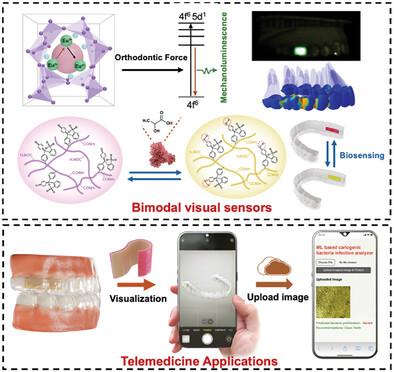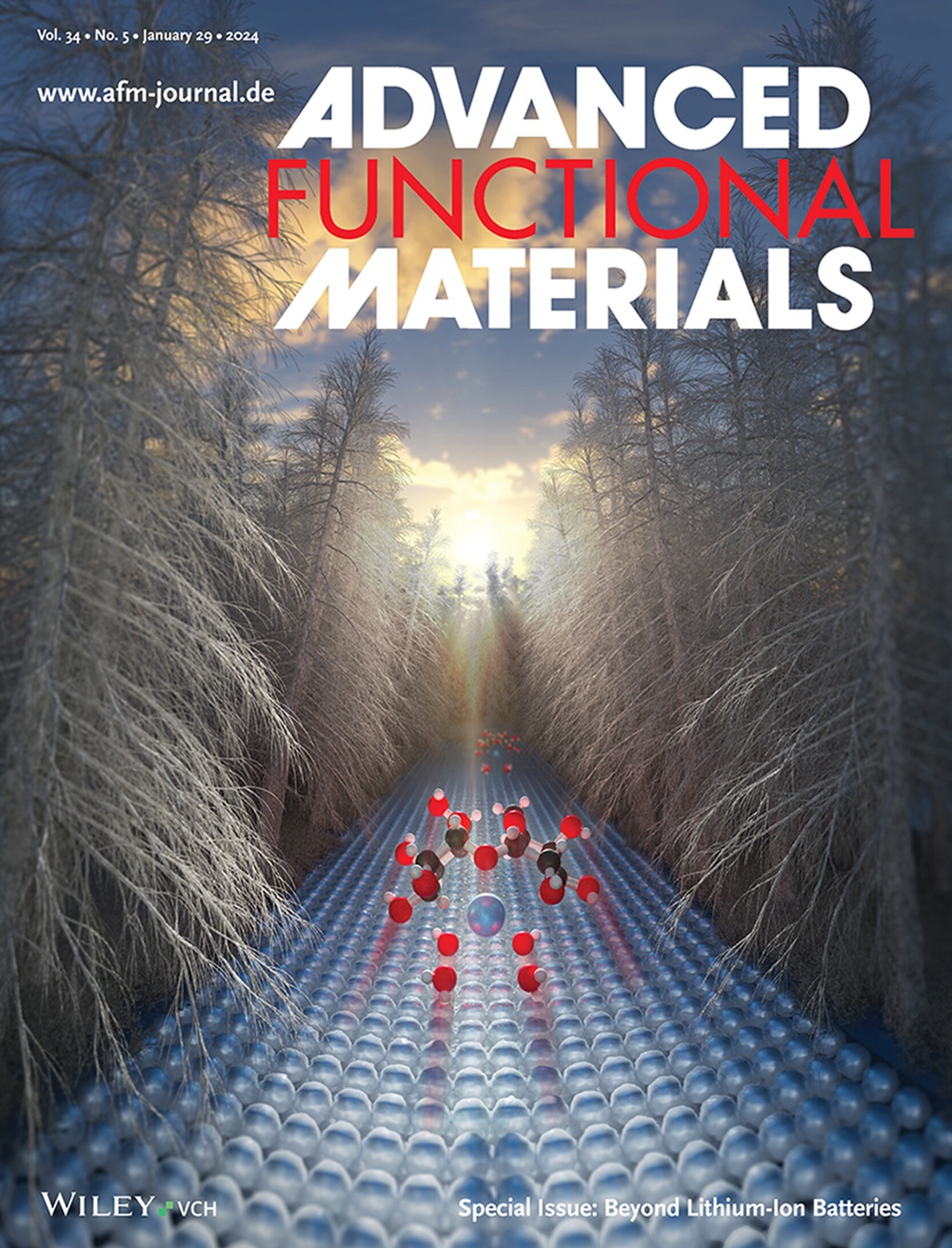基于机械发光和生物传感的双模视觉传感器用于人工智能辅助正畸技术
IF 18.5
1区 材料科学
Q1 CHEMISTRY, MULTIDISCIPLINARY
引用次数: 0
摘要
柔性视觉传感器在可穿戴电子设备和健康监测领域有着巨大的应用潜力。然而,如何在不相互干扰的情况下单独获取各种视觉信号,并将其功能集成到内部生物医学设备中,仍然是一项重大挑战。本文介绍了一种功能材料,它通过超分子相互作用将机械发光单元与生物传感单元整合在一起,实现了对牙齿矫正力和细菌感染的双模无干扰视觉检测。正畸力通过促进电子从铝酸锶晶体内部缺陷结构的破坏或重新排列所导致的被困能级中释放出来而诱发荧光。同时,无缝集成的生物传感组件能够以剂量依赖的方式有效地检测乳酸,突出了其在生物传感应用中的多功能性。此外,通过开发基于云的深度学习服务器,可实现 97.7% 的视觉信号精确解耦准确率,从而为远程监测提供便利,并实现正畸治疗的早期干预。所提出的人工智能增强型双模视觉传感器代表了正畸监测的新范例,适用于广泛的生物医学应用。本文章由计算机程序翻译,如有差异,请以英文原文为准。

Bimodal Visual Sensors Based on Mechanoluminescence and Biosensing for Artificial Intelligence-Assisted Orthodontics
Flexible visual sensors hold great potential for application in wearable electronics and health monitoring. However, the separate acquisition of various visual signals without mutual interference and their functional integration in internal biomedical devices remains a significant challenge. Here, a functional material that integrates mechanoluminescent units with biosensing units through supramolecular interactions, enabling bimodal non-interfering visual detection of orthodontic force and bacterial infection is presented. The orthodontic force induces fluorescence by facilitating the release of electrons from trapped energy levels, caused by the disruption or rearrangement of defect structures within strontium aluminate crystals. Meanwhile, the seamlessly integrated biosensing component can effectively detect lactic acid in a dose-dependent manner, underscoring its multifunctional capabilities in biosensing applications. Moreover, the development of a cloud-based deep learning server can achieve a 97.7% accuracy in the precise decoupling of visual signals, facilitating remote monitoring and enabling early intervention during orthodontic treatment. The proposed artificial intelligence-enhanced bimodal visual sensors represent a new paradigm for orthodontic monitoring, suitable for a wide range of biomedical applications.
求助全文
通过发布文献求助,成功后即可免费获取论文全文。
去求助
来源期刊

Advanced Functional Materials
工程技术-材料科学:综合
CiteScore
29.50
自引率
4.20%
发文量
2086
审稿时长
2.1 months
期刊介绍:
Firmly established as a top-tier materials science journal, Advanced Functional Materials reports breakthrough research in all aspects of materials science, including nanotechnology, chemistry, physics, and biology every week.
Advanced Functional Materials is known for its rapid and fair peer review, quality content, and high impact, making it the first choice of the international materials science community.
 求助内容:
求助内容: 应助结果提醒方式:
应助结果提醒方式:


